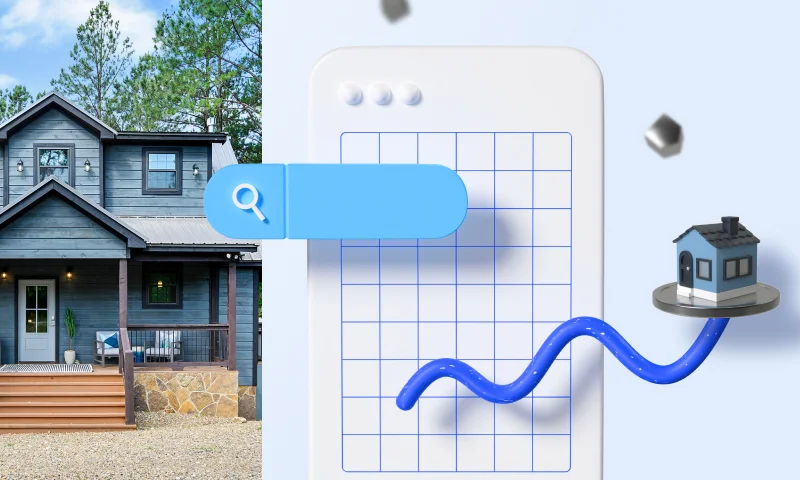There is currently a housing affordability crisis in the U.S.
Over the past 40 years, home prices have skyrocketed by more than 500%.
Many potential homeowners can no longer afford to buy a house. And if you rent — which 34% of American households do — rents are rising faster than income. As a result, average renters now put more than 30% of their income toward housing.
And renting over a long period can be very costly. A 2018 study found that over 30 years, buying a home in San Francisco would have added $1,456,296 to a person's net wealth versus renting.
Real estate has traditionally been viewed as one of the best ways to build wealth over time. But rising housing prices can increase wealth inequality and create a cycle of haves and have-nots. Property owners build equity over time, contributing to their net worth, while renters keep paying more and more rent.
Younger generations understand this and want to own real estate, but rising costs keep many from reaching their goals. While 87% of Gen Z feel homeownership is key to building wealth, nearly 80% felt home prices were their most significant barrier to entering the housing market.
This is an even bigger problem for minorities. Homeownership rates for Black and Hispanic Americans are consistently below the national average. In 2019, 73.3% of non-Hispanic Americans owned homes, compared to 42.1% of Black Americans and 47% of Hispanic Americans.
Where Do We Go From Here?
So, what can be done to help mitigate the impacts of the housing crisis? We believe that, as a society, we need to focus on:
Building more affordable housing
According to the most recent estimates from Freddie Mac, the country is short about 3.8 million housing units.
That deficit is particularly felt in the affordable housing segment. There are 7 million affordable units among the renter population for 11 million households with extremely low incomes nationwide.
Adding more housing units nationwide, especially in the affordable segment, is essential to tip the scales of the current shortage. Increasing the housing supply can stabilize housing prices, improve affordability, and reduce housing instability. This approach benefits individuals seeking housing, stimulates economic activity, and fosters community development.
Building more affordable housing is possible through several initiatives, such as incentivizing developers to include affordable housing units in their projects through tax breaks or other financial incentives. Streamlining regulations can also allow for more affordable building, as local, state, and federal regulations can sometimes hinder housing development.
Making it easier to buy a home
It isn’t easy right now to buy a home, but creating new financial mechanisms that make home-buying easier for first-time and first-generation buyers can help more people get their foot in their own door.
Making home-buying easier will likely involve policy changes, financial innovation, and community initiatives. For example:
- Down payment assistance programs: Extend the grants and low-interest loans available to help first-time homebuyers to reduce their financial burden.
- Tax incentives: Introduce tax incentives for first-time homebuyers while considering progressive tax structures that provide greater benefits to lower-income homebuyers.
- Financial education programs: Provide financial literacy and homebuyer education programs to empower first-time and first-generation buyers with the knowledge and skills needed for successful homeownership.
What We’re Focused on with Arrived
We founded Arrived with a mission of removing barriers to access so that anybody can own real estate and participate in its wealth-building potential.
While fractional property ownership differs from traditional homeownership, we see it as a potential step toward understanding property investment. As Arrived clients explore the financial aspects of fractional property ownership; some may consider purchasing their own home and transitioning to traditional ownership.
In support of our mission, we built Arrived focusing on these key features:
Accessibility
Arrived is available to everybody, not just accredited investors, and the minimum purchase amount is just $100.
Partnering with nonprofits
We partner with non-profits like JUST — an organization that invests in ambitious Black and Brown Texas female entrepreneurs to close the racial wealth gap — to provide financial assistance to organizations helping bridge economic divides or increase access to traditional homeownership.
Boosting financial literacy
At Arrived, we understand how critical financial literacy & education are for personal development. It is also one of the least taught subjects. As of 2023, 30 states require some form of financial literacy in high school, but only 16 require a stand-alone course. So, we made our own. We’re committed to growing our free education library.
Contribute More Housing
We recognize the massive undersupply of affordable housing, which is why we are committed to working with developers to help bring more properties to market and increase the supply of homes. We participate in two ways: By providing additional debt financing and capital options for many new real estate developments and by allocating investor capital to new housing that helps add to the housing supply. About 35% of properties on the Arrived platform are new homes that help incentivize developers to build more properties as of 2024. Over time as we grow, we aim to explore opportunities in earlier stages of the development process to potentially contribute to new housing supply at scale.
Arrived Results So Far
Since launching in 2019, Arrived has seen incredible interest from everyday people looking to access property ownership. Unlike traditional real estate investors, who often have over $100k invested, Arrived clients represent a much broader population segment. Below are some stats about our users:
- More than 30,000 people have bought shares in Arrived properties.
- Over half of Arrived investors have invested less than $1k in rental properties.
- Over 100,000 current renters have signed up for Arrived to learn more about accessing property ownership.
But to understand the impact that Arrived is making, it is best that you hear directly from our clients.


